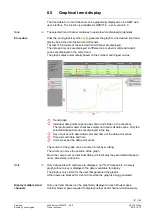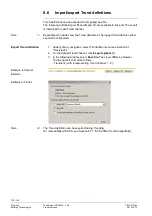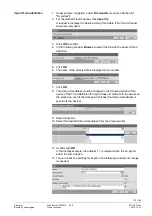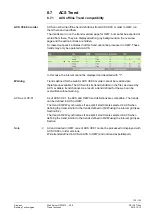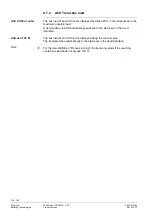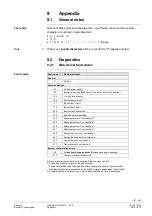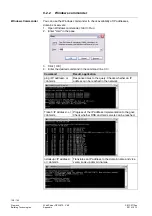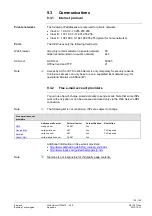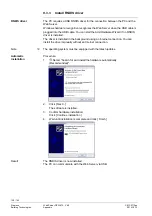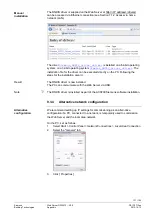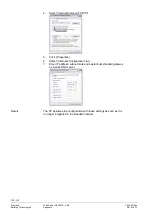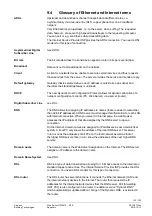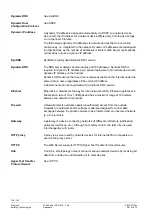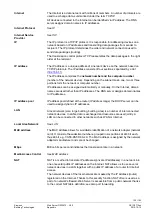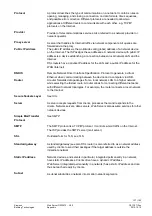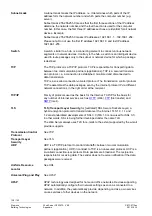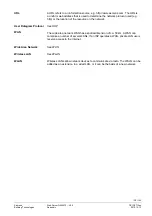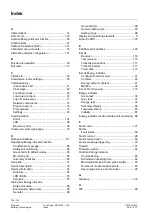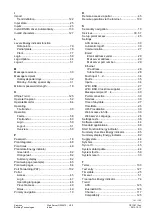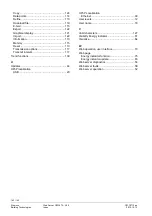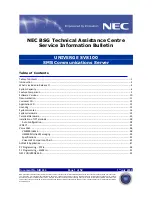
135 / 143
Siemens
Web Server OZW672... V6.0
CE1C5712en
Building Technologies
Appendix
2015-10-13
Internet
The Internet is a data network with millions of members. A number of protocols are
used to exchange data, summarized under the term TCP/IP.
All devices connected to the Internet can be identified via IP address. The DNS
server assigns domain names to IP addresses.
Internet Protocol
See IP
Internet Service
Provider
See ISP
IP
The IP protocol is a TCP/IP protocol. It is responsible for addressing devices on a
network based on IP addresses and transmitting data packages from sender to
recipient. The IP protocol determines the order and network connection used to
send data packages (routing).
The transmission control protocol TCP reassembles the data packages in the right
order at the recipient.
IP address
The IP address is a unique address of a network device on the network based on
TCP/IP protocols. The IP address consists of four sections, separated by a dot
(
192.168.1.1
).
The IP address comprises the
network number and the computer number
(number of the network device). Depending on the subnet mask, one, two or three
portions form the network or computer number.
IP addresses can be assigned automatically or manually. On the Internet, domain
names are used rather than IP addresses. The DNS server assigns domain names
to IP addresses.
IP address pool
IP address pool defined at the router (IP address range) the DHCP server can be
used to assign dynamic IP addresses.
LAN
A local network (size: large building, building sites) is a number of interconnected
network devices. In LANs, data is exchanged and resources are used jointly. A
LAN can be connected to other networks such as WAN or Internet.
Local Area Network
See LAN
MAC address
The MAC address allows for worldwide identification of a network adapter (network
card). It consist of hexadecimal numbers, grouped in six portions at 2x4 bit each,
thus 48 bit, e.g. 00-55-96-5D-00-2C. The MAC address is assigned by the network
adapter manufacturer and cannot be changed.
Mbps
Million bits per second indicates the transmission rate in a network.
Media Access Control
See MAC address
NAT
NAT is a method to translate IP addresses (private IP addresses) in a network into
one or several public IP addresses on the Internet. NAT allows us to use several
network devices in a LAN together with a public IP address of a router for Internet
access.
The network devices of the local network are masked by the IP address (router)
registered on the Internet. Thanks to this security function, NAT often is used as a
part of a network's firewall. Web Server is accessible from a public network thanks
to the correct NAT table definition; see also port forwarding.

